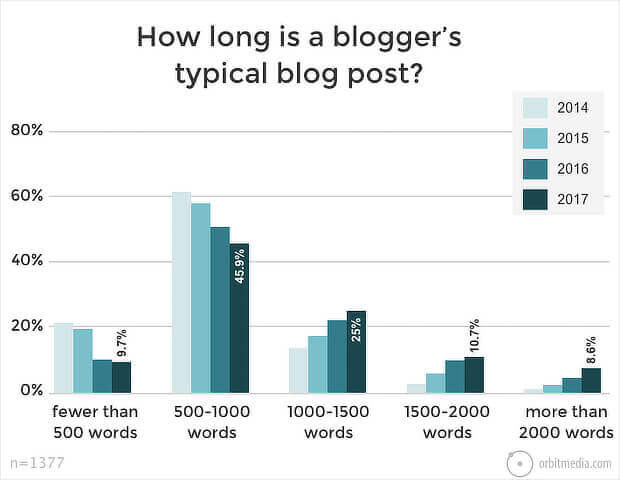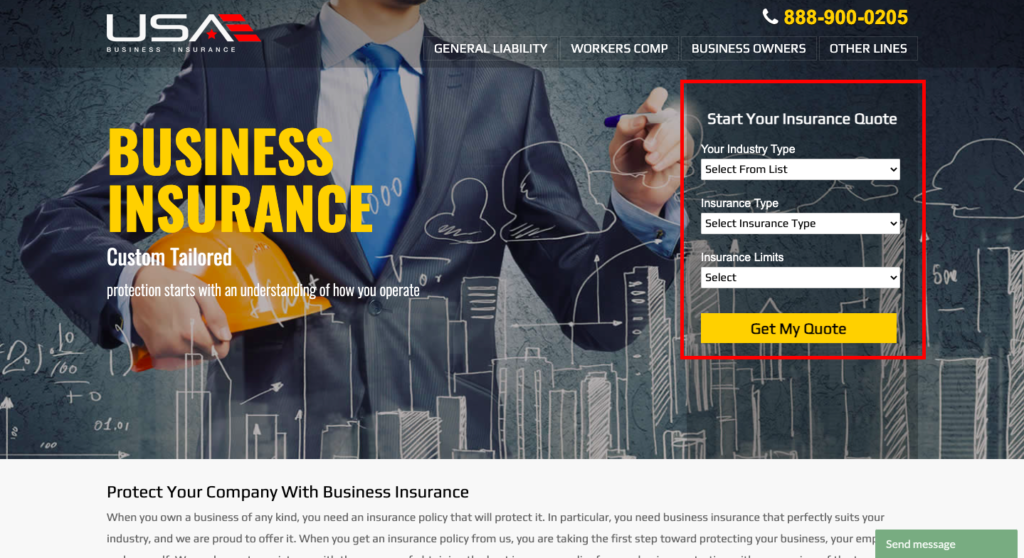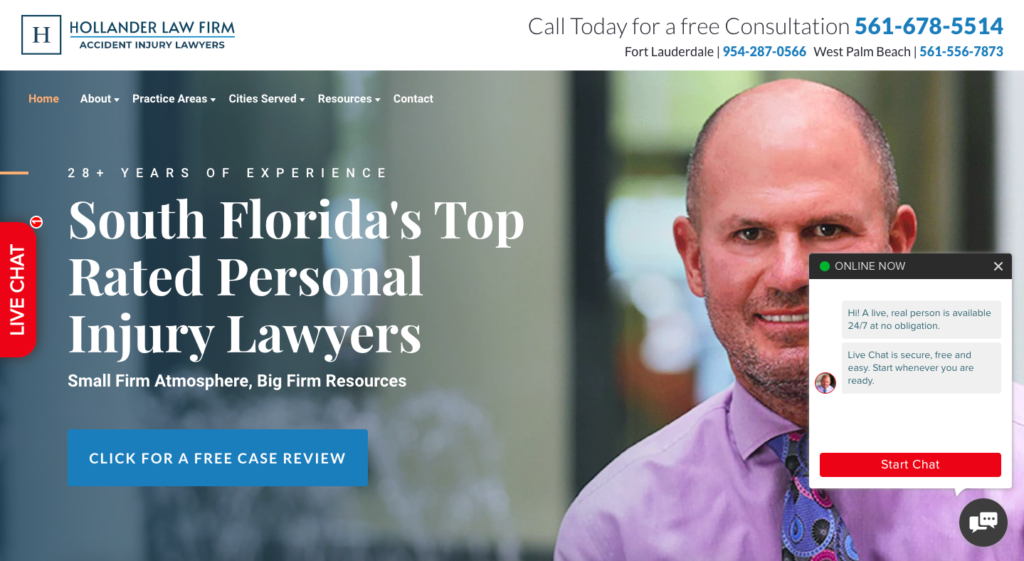Content marketing costs 62% less than traditional marketing and generates about 3 times as many leads.
So, any sane marketing department is going to want to create great content that captures profitable leads and brings in traffic.
However, the unfortunate truth is 65% of all companies find it challenging to produce engaging content.
That may be because they are selecting the wrong topics or targeting the wrong keywords, but more often than not it also comes down to making simple mistakes while creating the content- mistakes that could be easily avoided.
Writing internet content–from blog posts to sales copy–is much different from the writing you’ve always known.
Even the most talented copywriters find it challenging at times to write copy that persuades, motivates, and converts.
If you’re feeling stuck in a rut while trying to work your art, or you’re just discovering the magic of copywriting, you’ll want to stick around.
Here are nine copywriting tips and practices that will help you write persuasive copy, guaranteed.
#1: Analyze and Understand User Intent
In today’s day and age, user intent is something all content marketers and writers need to understand.
According to Search Metrics, user intent–also known as search intent–”states which goal or intention an internet user has when entering a search term into a search engine.”
For example, if someone searches for the keyword “learn copywriting online” into Google in search of copywriting courses, their “user intent” would be just that–copywriting courses.
User intent research should become a critical part of your copywriting workflow.
Using the previous example again, if you’re writing a blog post for the keyword “learn copywriting online” and the user intent is for courses, then you’d want your post to be a listicle of courses–not a post teaching readers how to learn copywriting online, as that doesn’t meet their search intent.
Finding out the user intent behind any keyword is easy–simply search for it and take note of the top search results.
When it comes to copywriting, you never want to reinvent the wheel–just improve it.
Photo by Anna Auza on Unsplash
#2: Speak to a Buyer Persona
One of the most popular copywriting tips on the internet is “define your target audience.” But have you ever considered that within your target audience, there are multiple types of people?
This is where a buyer persona comes in handy.
“Target audience” is a broad term. A “buyer persona” is an ultra-specific type of person you want to lead through the buyer’s journey (or become your customer or client). This buyer is also known as an “ideal buyer.”
For example, the target audience of a personal finance blog is probably something like “people wanting to save money, invest their extra cash, fix their credit score, and reduce debt.”
However, an array of different types of people fit into that category–making it hard to speak directly to them without niching down more.
Thus, buyer personas of that personal finance blog might include:
- A 16-year-old trying to earn money for their college savings
- A 22-year-old who just graduated college and now has student loan debt to repay
- A middle-aged woman who lives paycheck-to-paycheck, and wants to learn how to start saving
- A middle-aged man who needs to raise his credit score
When you speak to a specific buyer persona in your copy, you can connect with your readers on a more personal level.
#3: Write Eye-catching Headlines
You can’t afford to be boring on the internet, no matter which industry or niche you’re in.
According to Buffer, 55% of the people who read blog posts only do so for 15 seconds. “What could they possibly read in such a short period of time?” you might be asking.
The answer: headlines.
Most people only skim articles online, which means you have significantly less time to convince them to keep reading and bring them further down your sales funnel.
For example, if you want website visitors to take the next step of signing up for your newsletter, you need to convince them there is something amazing included in those newsletters which means packing as much information into your headlines as possible.
Quick Tip: To keep costs low, you can go for a newsletter software from a company like SendInBlue that allows you to send up to 300 emails every day for free.
Luckily, crafting seductive headlines is relatively simple, and the more you do it, the easier it gets.
For starters, implement a few headline writing best practices:
- Add quantities (numbers of tips, resources, benefits, etc.)
- Use power words (words that evoke emotion and responses, and aren’t cliche)
- Tell readers what the section is about (Tips? Steps? Benefits? Reasons?)
- Write and test multiple variations of headlines
Photo by Samantha Borges on Unsplash
#4: Target a Stage in the Buyer’s Journey
A buyer’s journey is the journey someone goes through before converting into a customer.
It consists of three main stages: the awareness stage, consideration stage, and decision stage.
Familiarizing yourself with each stage is an essential step to becoming a powerful copywriter.
Let’s say you’re selling a copywriting course.
Someone reading your blog post titled “what is a copywriter” isn’t ready to purchase the course yet, as they aren’t even sure what a copywriter is.
On the other hand, someone who clicks on your Facebook ad for the copywriting course and downloads your freebie from the landing page is a little closer to reaching for their wallet.
Awareness Stage
In the awareness stage, a person knows they have a problem or desire and begins searching for ways to solve or fulfill it.
When creating content for people in the awareness stage, it’s essential that your copy is educational, informational, and engaging.
In other words, your readers shouldn’t finish reading it while still feeling confused or unsatisfied–always aim to answer their questions in full.
Consideration Stage
When a person enters the consideration stage, they become a lead.
After learning more about their current problem or desire, they know the next steps they should take and are making a list of companies that can help them.
People in the consideration stage are those who have given you some type of contact information–such as their email address-in exchange for content.
For example, someone who signs up for your email list in exchange for a free download is now a lead and in the consideration stage.
Decision Stage
In this stage, the lead has decided who they’re going to buy from and which product or service they need.
In other words, they’re now your customer.
Content for those in the decision stage include:
- FAQs
- Feedback surveys
- Email sequences that explain how to make the most out of their purchase
- Blog posts that teach them what to do next
#5: Avoid Overselling and Using Sales Language
Salesy language and over-promoting are marketing tactics of the past. Today, consumers see straight through flashy CTAs (calls-to-action), clickbait ads, and forms urging them to sign up or they’ll “miss out.”
Instead, consumers expect companies to make an effort to connect with them, relate to them, and build trust with them–as they should!
And with strong copywriting skills, doing so isn’t hard at all. Here are a few tips to get you started:
- Mention your brand/product/service only when it’s relevant in the copy
- Avoid salesy language (phrases like “buy now!”, “don’t miss out!”, “get yours now!”)
- Only self-promote after you’ve informed, educated, or entertained your readers
- Instead of promoting your product yourself, consider asking customers to give you reviews that you can quote within your article. You could start by reaching out to customers that are already bringing in referrals for your company since they are bound to have good things to say about you.
- Limit the amount of CTAs you include on a page
Making sure you are marketing your product using the right techniques is imperative and it is a never-ending learning journey. Investing in a great digital marketing course or in a good book is always worth the money.
#6: Less Words is More
As a copywriter, the words of Dr. Seuss should become your motto: “The writer who breeds more words than he needs is making a chore for the reader who reads.”
Put simply: no one wants to read unnecessary lines of fluff. If a 30-word sentence can be dwindled down to 20, do it.
Additionally, you should always make sure the copy is easy to read and can be scanned or skimmed while still getting the point across.
As discussed earlier, if the reader can’t tell what the copy is about by reading the headlines, they probably won’t stick around.
Lastly, simplify the language of your copy by avoiding industry jargon, adverbs, obscure vocabulary, and fluff.
While big words might make you sound smart in an academic setting, they make you sound stupid, unrelatable, and frustrating on the internet.
#7: Incorporate Storytelling into Your Copy
Storytelling engages readers and provokes emotions, making it a persuasive copy writing tool.
Simon Sinek explains it perfectly with his “Golden Circle.” Most people start by telling readers what they do, how they do it, and then sometimes, why.
However, Sinek encourages brands to start by explaining why they do what they do, how they do it, and then what it is they’re trying to sell.
Do you sell beauty products that are vegan and cruelty-free because they’re hard to find at affordable prices?
Were you inspired to start selling running shoes because as a novice runner you suffered from many injuries due to improper shoes?
Whatever your “why”, share it with readers to become more relatable, trustworthy, and human-like.
You could create an awesome infographic to help get the point across or ask your graphics team to come up with something relevant for the post.
Photo by Avel Chuklanov on Unsplash
#8: Craft Compelling CTAs
While you certainly want to avoid salesy language and overpromotion, CTAs (calls-to-action) and generating leads still deserve a spot high on your priority list.
When done right, a compelling CTA can generate an endless amount of leads, drive more sales, and increase revenue at surprising percentages.
CTAs tell the audience what action you want them to take next. For example, a popular CTA used by bloggers and big brands alike are sign-up forms. In exchange for their email address, a lead is promised something like a free checklist, ebook, PDF guide, or email course in return.
For example, Business Insurance USA, has a highly personalized sign-up form that offers visitors a free quote:
This form allows the team behind the company to guide site visitors further down the sales funnel while also gathering valuable information about the potential customer such as their industry type, their budget, and the insurance type they are interested in purchasing.
Of course, a CTA of this length may not be suitable for all industries. CTAs are also the buttons you use on your website homepage that read “book a free consultation” or “learn more.”
For example, Hollander Law Firm, has a simple CTA that offers free consultations to site visitors and it works like a charm:
No matter what kind of CTA you’re going for, be sure to use engaging language that allows you to relate to readers. They work best when preceded by valuable content that helps your readers.
#9: Cover Topics In-depth
Contrary to previous marketing beliefs, you can almost never give away “too much” when creating content and connecting with potential customers.
The purpose of every piece of copy you write should always be to take the reader from Point A to Point B. Then, your product or service will take them to Z.
But in order to persuade readers into believing the power of your product, you absolutely must be able to help them first. And you can start by covering the topics you write about in-depth.
Use tools like Answer the Public, Google’s “People also ask” box, and the “related searches” suggestions to brainstorm different ways to create long-form content.
For example, when writing a blog post for the keyword “how to budget,” you can also answer questions like these that many readers are already asking:
Final Thoughts
If you want to write persuasive copy, you need to write with the reader in mind.
From researching user intent to incorporating storytelling into your copy, the goal is to engage and relate to your audience.
But one thing will always stay the same: you can’t sell with copy unless you use it to first provide value.
So, tell us- how do you provide value with your content?
Featured Image Credit: Unsplash.com
Freya is a personal finance expert and founder of the CollectingCents website that teaches readers how to grow their passive income, save money, improve their credit score, and manage debt. She has been featured in publications like Business Insider, Fox Business, the Huffington Post, and GoBankingRates.










